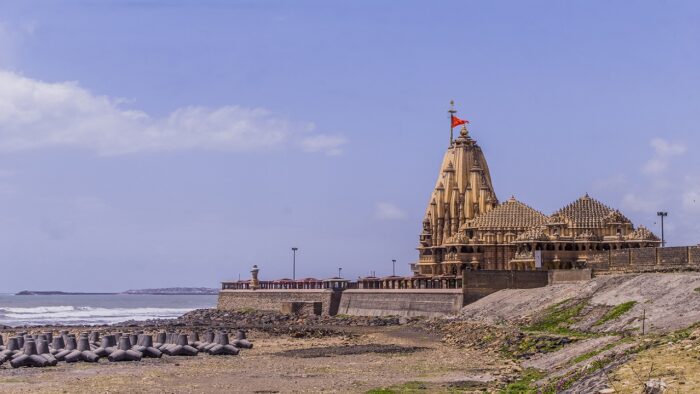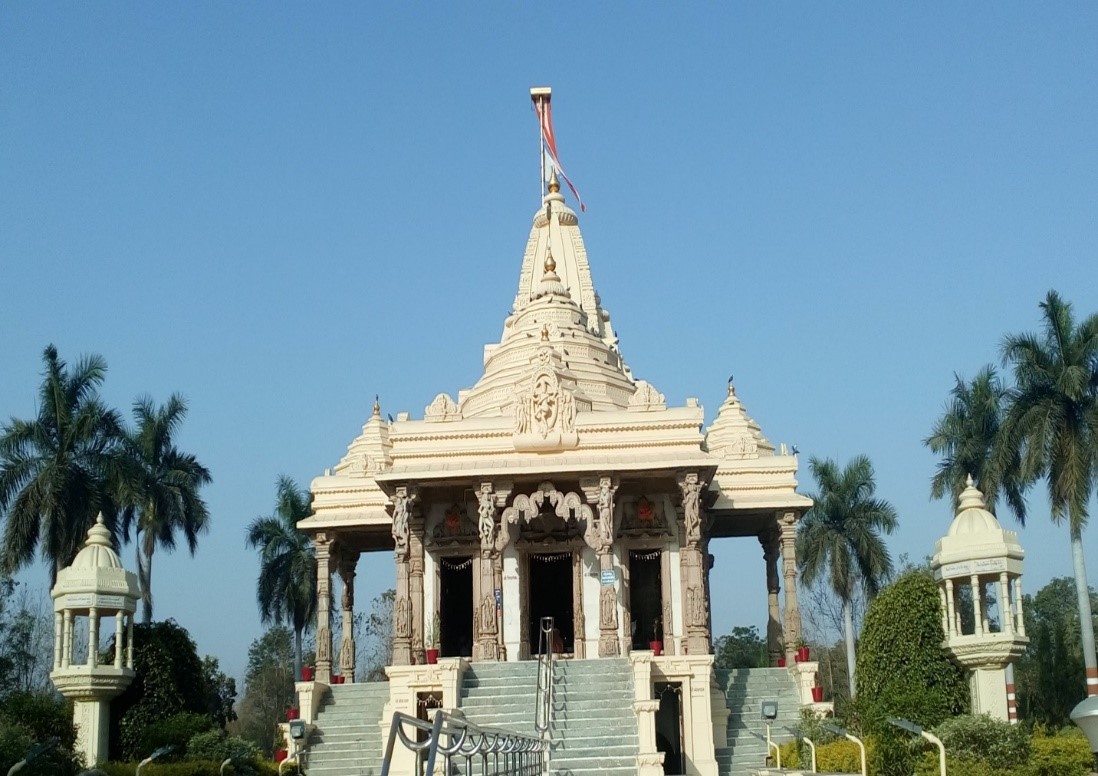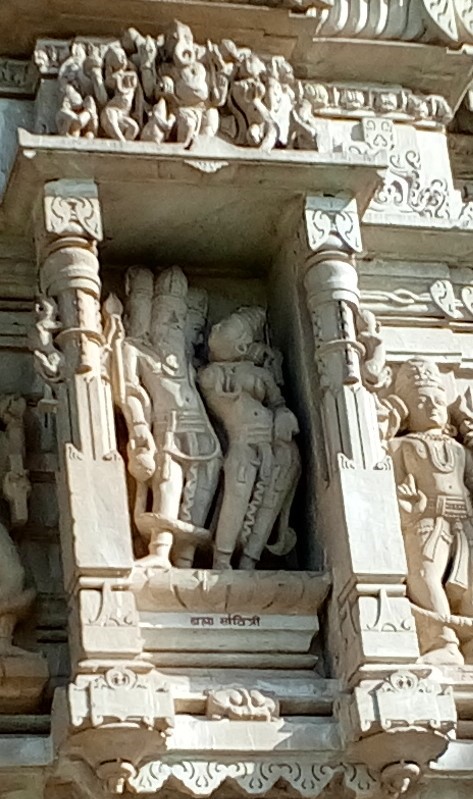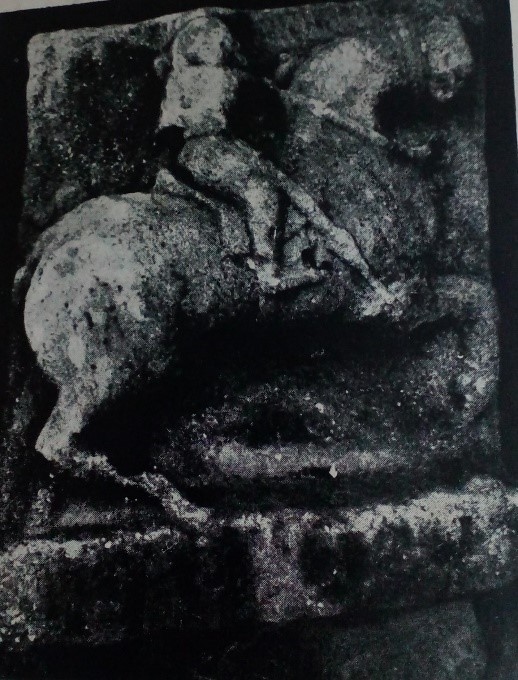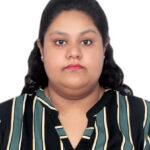Introduction
Gujarat is a state on the western coast of India with a coastline of 1600 km and the most part of this coastal region lies on the Kathiawar peninsula. It shares its borders with Rajasthan to the northeast, Daman and Diu to the south, Dadra and Nagar Haveli and Maharashtra to the southeast, Madhya Pradesh to the east, the Arabian Sea and the Pakistani province of Sindh in the west. It is the fifth largest Indian state by area with its capital city Gandhinagar. The state encompasses sites of the ancient Indus Valley Civilization like Lothal and Dholavira which are well known for the dockyard and intricate water systems. Gujarat’s coastal cities Bharuch (Broach) and Khambhat served as a major trading center for the Indus Valley Civilization, Mauryan, western Kshatraps and the imperial Guptas. Gujarat also housed other dynasties like the Chalukyas of Gujarat or the Solankis, the Maitrakas of Vallabhi, the minor dynasties and even the Muslim invaders.
The first documented religious history of Gujarat is evident from the Mauryan period (322-185 BCE) ruling mainly in the Saurashtra region. Along with Buddhism, Jainism also flourished as Chandragupta Maurya was an ardent follower of Jainism. The Jain tradition mentions that Chandragupta abdicated the throne under the influence of Jain teacher Bhadrabahu whom he followed towards South of India, lived as an ascetic at Sravanabelgola in Mysore where he finally starved to death (1987 Sen). Asoka who was a supporter of Buddhism, chose Gujarat to place one of his Rock Edicts at Mt. Girnar Junagadh districts. Under the imperial Guptas(4th century AD) during which time we see Brahmanical revival though they remained tolerant towards Buddhism. The most popular Brahmanical Gods during this period were Vishnu, Shiva and Surya. The lack of royal patronage marked a decline of Jainism during the Gupta period. It was again during the Chalukyas of Gujarat or the Solankis (942-1304 CE) that Jainism established its root. Islam started penetrating Gujarat through the Arab invaders in Bharuch, Khambat and Veraval which were major trading ports.
Shaivism : Origin and Background
Siva is an ancient God who was supposedly worshipped during the age of Indus Valley Civilization as evidenced from the Pashupati seal from Mohenjo-Daro (Marshall 1931). Siva also identified as Mahadeva or the Supreme Being, a great Yogi conceived in various forms, got a very prominent place in Indian art, since the early medieval period. The images of Siva can be classified into two broad categories, those depicting Ugra or Ghora (Terrifying) aspects, and the others illustrating his Saumya or Santa (Peaceful) aspects. Sculptors have depicted various forms of Siva (Lilamurtis) such as dancing, meditating, teaching or sitting with his consort Parvati. As a teacher of yoga, music and other science Siva is depicted seated facing south while he taught the Rishis yoga, thus he is also known as Dakshinamurti.
Due to philosophical and tantric evolution of Saiva sect, vast literature, rituals and sculptural forms were created. The Sadasiva whose five faces represents Tatpurusha, Aghora, Tamandeva, Sadyojata and Isana are collectively known as Panch-Brahmas and they are regarded to be emanations from the Niskala Siva (the formless).
Siva has been depicted as a teacher of the universe (Jagat Guru), the lord of Yogis (Yogisvara), the God of spirits (Bhutesvara), the lord of dance (Nataraja) and the lord of animals (Pāśupata).
Siva sculptures are found in two forms – the human form and the symbolic (Linga) forms. Metaphysically, the Siva form represents Goodness (Sivam) and the state of Gunatita or being above the attributes. His bull has been regarded as dharma. His cosmic dance is the dance of spheres, the dance of ultimate dissolution of the world. His trident, the skulls and also his serpents are the very symbol of destruction.
Sources for the Study
The theistic ideas of Saivism develop in the Atharasiras Upanishad. Saivism is one of the oldest and widely spread religious sect. The followers of Saivism are called the Saivites who believe Siva as the Supreme Being.
- Archaeological Sources
The earliest coins bearing Saiva emblems are image of Siva with trident in hand on the obverse and his bull on reverse of the Kushans in the early centuries.
Navasari copper plate of the Gujara King Jayabhakta II which were issued from Kayavatara.
Sendraka King Nikambhallasakti and Eklingji stone inscription of 971 CE mention Kayavatara as Karohana present Kayavarohana which is the original seat of Lakulish sect.
- Literary Sources
The literary sources for Shaivism and Pāśupata sect include the Puranas-Linga Purana, Siva Purana, Vayu Purana. Upanishad includes Atharasiras and Sveteshvatara, Karvana Mahatmaya. Epics: Ramayana – Ravana worshipping Rudra. Mahabharat a-Fight with Arjun and Siva in the form of a tribal man.
Rudra Siva
Rudra is a Vedic deity who holds jurisdiction over varied aspects of reality, including wild animals, storms, disease, death, and medicine. Rudra is frequently depicted in the Vedas as a terrifying entity, representing the numinous aspect of God with fear-inspiring abilities such as that which causes disease. In contrast, Rudra also possesses milder characteristics such as the ability to heal. These antithetical traits are a consequence of the considerable amount of syncretism of regional and tribal gods that took place under his name. Rudra is an early form of the Hindu god Siva, the lord of destruction, and due to the complex allegorical and religious link between the two deities, they are often referred to together as Rudra-Siva.
There are several suggested etymologies for the term Rudra. One possible origin is the Sanskrit root Rud,or “to cry,” which explains reference to Rudra as the “howler.” Alternatively, Rud has been connected to the verb “to be reddish,” which suggest that Rudra’s name was inspired by the redness that often characterizes storm clouds. Yet another etymology associates Rudra with the term Rodasi which refers to “heaven and earth,” perhaps implying the god’s male and female aspects, which come to fruition in the Puranic god Ardhanarisvara.
Rudra also embodies many qualities associated with Varuna, the supreme god of the early Vedas who was eclipsed by Indra. As the Great God of the later Vedas, Rudra inherited many of Varuna’s essential attributes. For example, Varuna’s power of Maya or his ability to create forms in the physical world seems to have gradually became Sakti, the creative force which is identified as one of Rudra-Siva’s paramount powers.
Worship of Rudra
The form of Rudra most popularly worshiped was Pashupati (Lord of the beasts). Due to his close relation with various forms of life and fertility, Rudra was commonly worshipped in the form of phallus (Linga) emblem. This emblem came to supplant his anthropomorphic representation, and is still used today in the worship of Siva.
Regardless of his popularity, only four hymns in the Rigveda are dedicated to Rudra. The most notable of these hymns is the Shri Rudram. This mantra celebrates the various health-giving aspects of Rudra and asks for deliverance from the more terrifying aspects of his character:
O Rudra! Salutations to Your anger! Let that anger go towards our enemies, not towards us! Also let (our) salutations be to Your arrow. And also, salutations be to Your bow. Also, salutations be to Your two hands which hold the bow and arrow. Let all these be active in destroying enemies, but not in me.
(From Taittiriya Samhita 4.5.1).
This hymn seeks to glorify Rudra in order to pacify his wrath and thereby prevent the reciter from becoming victim to the deity’s arrows. Although Rudra has been replaced in contemporary Hinduism by Siva, this mantra is still chanted by Hindus today.
Rudra & Siva
In the later Vedas, Rudra came to inherit new names such as Bhava, Sarva, Mahadeva, and Siva, most of which were probably names of regional or indigenous gods. In the divine personality of Rudra, the traits of these deities seem to have been syncretized into one supreme god. By the time of the Upanishads, Rudra had assumed all the typical traits of a single, Supreme Lord, such as omnipotence, omniscience, and transcendence. In the Svetasvatara Upanishad particularly, Rudra–Siva is proclaimed to be identical with Purusha, the primordial man, and even Brahman, the monistic essence of the universe. By this point he was also perceived to be protector and creator of all things.
The following verse from the Svetasvatara Upanishad illustrates the immense power attributed to Rudra:
“He who is the source and origin of the gods. The ruler of all, Rudra, the great seer, who of old created the Golden Germ”
(From Svetasvatara Upanishad III.4)
This verse suggests the importance that Rudra would come to attain after transforming into Siva. In the Yajurveda, the term “Siva” was at first used in order to distinguish Rudra’s auspicious nature from his fearsome appearance. Siva would later develop his own distinct character and supplant Rudra entirely. Although many opposites met in Rudra, it was not until the character of Siva was fully developed that they were reconciled. Because of the complexly interwoven relationship between Rudra and Siva, scholars often refer to both gods as a collective entity, “Rudra-Siva,” in order to acknowledge their fusion in Hindu worship.
Pāśupata sect in Gujarat
The Siva Bhagavatas mentioned by Patanjali (2nd century BCE) mentions Lakulisa as the organizer of the two extant Pāśupata Texts-Pasupata Sutra and Ganarika. Important early references to Pāśupata occur in Mahendravarman’s south Indian drama ‘Matta Vilasa’.
Somnath Pattana Prasasti, the temple priest Bhava Brihaspati is praised for possessing a body like that of Nakulisa i.e., Lakulisa. Brihaspati also claims to have been a preacher of Pāśupata vows, which during Chalukya period were indistinguishable from those of Lakulisa; Cintra Prasasti records some traditions about the origin of the sect.
According to Mahabharata (Narayaniya section, Santiparvan) Pashupati doctrine were first preached by Siva-Srikantha who was a teacher. Pingalmata, a tantric work preserved in Nepal in an old manuscript of 1174 CE speaks of Bhagavata Srikanthanath as its author and Lakulisa was probably his disciple.
Thus, Lakulisa was in all likelihood the founder of the Pāśupata order. The sources for his personal history are numerous and various but not very complete or consistent. Kaundinya’s Bhasya mentions Lakulish’s birth and priesthood appears in the Vayu and Linga Purana.
According to Vayu and Linga Purana which mentions that when Vasudeva was born in the Yadu Family, Siva entered into a dead body and incarnated himself as a Brahmin by the name of Lakulisa at a place called Kayavarohana i.e., who incarnated himself with kaya at Karvan. Various Puranas mention that during ‘Satyug’ it was called ‘Icchapuri’, ‘Tretayug’ it was called ‘Mayapuri’, ‘Dvaparyug’ it was called ‘Medhavati’ and in ‘Kaliyug’ as ‘Kayavarohana’. It was regarded as the Kashi of west.
(Figure 1: Lakulish Temple at Kayavarohan, Vadodara, Source: Pratishtha Mukherjee)
Stone inscriptions and copper plates found at Karvan mention that it was a prosperous place (1975 Dave).
The Pāśupata doctrine divides into five main principles i.e. (i) Karya (ii) Karana (iii) Yoga (iv) Vidhi and (v) Dukkhanta.
- Karya or effect is that which is not independent. It is of three types: Cognition or vidya, organs or kala and individual soul or Pasu.
- Karana or cause is that which effects the destruction of the whole creation and its prosperity. The being who is endowed with the power of creation, destruction and protection, the lord Paramesvara is to their philosophy as the Karana.
- Yoga or union of the soul with Pati is attained in two ways – first it is attained through japa, dhyana and other karmas while in the second by strict control over sense.
- Vidhi or religious practice consists of the vows specific practices known as Upaharas. The Vidhi of the Pāśupata s include bathing thrice a day in ashes, lying down on ashes, making noises, singing loudly or dancing, curling tongues and roaring like bulls.
- Dukkhanta or the end of pain is of two sorts i.e., Anatmakamoksha and the Satmakamoksha. The former is described as absolute freedom from pain.
Disciples of the sect
It is said that Lakulisa had four major disciples – Kusika, Gargya, Mitra and Kaurusha. Kusika propagated the faith around Mathura. Gargya was sent to Kashi and its surrounding areas. Mitra worked in Southern India and Kaurusha in Central India. Apart from propagating the teachings of Pāśupata these four also popularized the doctrines of Patanjali’s Yoga Sutras and Asanas.
Pāśupata Temples in and around Kayavarohana and other places in Gujarat
A. Kayavarohana
(Figure 2: The Lakulish Temple, Kayavarohana, Source: Pratishtha Mukherjee)
Kayavarohana (22.067 N 73.2500 E.) is situated 30 kms of the Baroda District of Gujarat and is one of the sixty-eight tirtha or pilgrimage of Siva as mentioned in Shiv Purana. However, Karvan is not among the 12 Jyotirlingas. Kayavarohana or presently called Karvan is the actual seat of Pāśupata Lakulish sect. Various Puranas mention that during ‘Satyug’ it was called ‘Icchapuri’, in ‘Tretayug’ it was called ‘Mayapuri’, ‘in Dvaparyug’ it was called ‘Medhavati’ and in ‘Kaliyug’ as ‘Kayavarohana’. It was regarded as the Kashi of west. As the kaya or the body of Lakulish made an avarohana or descent in this place it came to be known as ‘Kayavarohana’.
Karvan harbors the Brahmeshvara Jyotirshivlinga founded by Maharishi Visvamitri. The Linga present here represents an exceptional iconic form of Siva in a meditating posture, ithyphallic, holding a Danda (stick) and Bijoru (fruit). The Siva Linga is made of black basalt and regarded as ‘Swayambhu’ (self manifested). The daily rituals include snana (bathing), bhoga (feeding), puja, darshana and one of the important festivals of Karvan is Shivratri.
The temple’s super structure or the Shikhara was renovated on May 3, 1974 by Swami Krupalvanand (Figure 2). In the front, the temple flight of steps takes us to the main entrance which is an elevated portion. After entering the gate there is Nandi (bull) and Kurma (tortoise) (Figure 3), while the deity is placed inside the sanctum or the garbhagriha where offerings are made by giving flowers and chanting the mantra: “Om Lakulishya Mahadeva Namaha” after which pradakshina is done around the temple. The interior walls are designed with various yoga postures and the exterior walls of the temple are decorated with profusely (Figure 5) carved sculptures of Brahma (Figure 6), Shiv (Figure 7) and Vishnu (Figure 8) along with their consorts and various celestial nymphs. There is a distinct feature of this temple i.e., a makara shaped pranala from where water from the Shiv linga goes out. A sculptural representation of a human figure sitting and drinking the water can be seen.
(Figure 3: Sculptural Panel at Karvan depicting Brahma and Savitri, Source: Pratishtha Mukherjee)
Villages near Kayavarohana
There are many temples near Kayavarohana but there are six major villages that hold firmly the remains of the Lakulisha Pāśupata Sect.
- Salad
Salad is situated 20 Kms from Vadodara and covers an area of 862.63 hectares. It has a hot and humid climate. This village is said to have existed since the time of Mahabharata and as Sahadev, the Pandava found this village it was named after him as ‘Sahadevpura’ (1956 Mehta). There is a temple dedicated to Siva existing here since the medieval times called the Madiya Mahadev. An inscription here dated to 7th Century AD even talks about Iranians coming to Gujarat for trade.
- Khanpur and Kunpura
(Figure 4: Credit: Mehta 1957 – Equestrian Memorial stone from Khanpur and Kunpura from Karvan)
There is temple dedicated to Hanuman here. At the entrance of the temple there are two equestrian memorial stones which depict a warrior on a horse holding a sword and an armor. A Lakulish murti has also been found which is dated to 8th century AD and resembles the deity found at Timbarva. Pottery and micro lithic tools have also been excavated which gives us information about the type of habitation here. A well has been found near the Hanuman temple which has an inscription in Persian.
- Lingasthali
Lingasthali is situated in the Dabhoi district. Not much remains here except a small ruined structure of Lakulish.
- Timbarva
Timbarva is situated in the Sinor taluka and is 47 Kms from Vadodara. Lakulish murti has been reported similar to the main deity at Karvan. This structure was reported by R.N. Mehta. South East of Timbarva lies Nithai from where two equestrian memorial stones have been found.
- Avakhal
It is a small village in the Sinor taluka of Vadodara. It is from Ulkagram here that Lakulish Pāśupata sect developed. Karvana Mahatmya adorns Karvan and Ulkagram i.e., Avakhal. The whole text is a eulogy of the worship of Lakulish.
(Figure 5: Credit: Mehta 1957 – Lakulish Sculpture from Avakhal)
In the text Mahatmaya of Pattabandhana Siva mention two chief towns. Ulkagram is the birthplace of a boy who performed the agnihotra ceremony in absence of his parents and died as early as six months. His body was thrown into the pond Devakhat.
In the temple of Nakuleshvara or Lakulish, other antiquities were also traced in this village. There are two stylistic groups, one of them is Lakulish with nandi and memorial stones. The Nandi was worshipped as Dhavraka Dev.
B. Somnath Temple
Images of Lakulisa, the propagator of Pāśupata sect and said to be 28th incarnation of lord Siva, were carved on the walls of Somnath temple. Typologically they fall in one group by the modes of their seated position in Baddhasana.
Some of the important sculptures have been described here. A very fine and well-preserved image of Lakulisa of 10th century CE shows the main iconographic character of this deity where Lakulisa is sitting in bandhasana pose. He has two arms and by left arm he is holding Bijoru. The panel is decorated with deeply-carved Vela designs. In other image of Lakulisa of 12th century CE, he is holding danda in left hand while the right arm is broken. Foliage designs are carved below an elegant image of Lakulisa carved in bold relief. This Linga is still being worshipped near Siddhanatha temple near Triveni-sangam. In this, like in many other depictions of Lakulisa the two-armed god is represented, seated cross-legged suggesting the submergence of Lakulisa in the Linga form. This corresponds exactly to the description given in the Karvan Mahatmya though the image is much worn-out. There are figures of disciples or Pāśupata charyas on the pedestal. Stylistically this image could be ascribed to 9th century CE.
C. Lakulish Temple at Champaner Pavagadh
The temple of Lakulish is one of the ancient monuments near the Chhasya Lake at Champaner Pavagadh. The date of the temple has been assumed as the end of 10th century AD to beginning of 11th century AD. The present temple is in ruins. Only the profusely carved Jangha of the temple remains.
Here Lakulish is present as one of the Bhairava (guardian of Shakti) of devi. There is a carved sculpture of Lakulish at the main entrance door holding a Lakuta (stick) and Bijoru (fruit). During the period of the Solanki’s, Pāśupata spread all over Gujarat and got patronage under the Solanki’s as well as other minor dynasties prevailing. The present temple is made of metamorphosed limestone and is a west facing temple. The architecture shows local as well as Paramara influence. There is a beautiful composite figure called the ‘Brahmeshanarka’ which includes Vishnu, Brahma, Siva and Surya.
Conclusion
From the above, it can be deduced that Shaivism was prominent and widespread in Gujarat at least from the beginning of Christian era. And if the terracottas from the Harappan site of Surkotada are considered valid then the earliest relics of Siva worship in Gujarat could be traced back to the Chalcolithic age. The study has revealed a variety of Linga forms like Saumya, Ugra and composite images of Siva as well as deified saints like Lakulisha.
Siva’s aniconic representation in the form of Linga seems to be the earliest more popular and widely spread form than any other Saiva icons. The study of the Lingas showed the worship of varieties of Linga’s such as Jyotirlinga, Svayambhulinga.
The tradition and the recent excavations at Karvan have revealed that Kayavarohana or Karvan was the center of Lakulisha worship since early centuries of Christian era. But his early images found also from Rajasthan and Mathura indicates that though Karvan was the birth-place of Lakulisha his karmabhumi was Rajasthan and Mathura region.
The earliest image of Lakulisha so far known from Gujarat belongs to the post-Gupta period (c. 7th cent. CE.). A variety of Lakulisha images such as seated, standing, two and four-armed have been found from Gujarat. Similar types are also available in Rajasthan, Madhya Pradesh, Uttar Pradesh, Orissa and other places.
During the later periods Pāśupata Sampradaya faced a slight decline because of the four disciples namely Gargya, Kusika, Maitreya and Kaurusha who made their own doctrines and the actual system was somehow lost.
Bibliography
Acharya, Girajashankar V 1970 Indian Archaeology – A Review Historical Inscriptions of Gujarat
Acharya, Girajashankar V. 1975 Historical Inscriptions of Gujarat (Gujarati).
Banerjee J.N. 1935 The Development of Hindu Iconography
Banerjee P. 1990 Early Indian Religions. p. 64.
Bhandarkar D.K. 1906-7 Lakulisa in Archaeological Survey of India, Annual Report pp. 179-92.
Dave. M. R .1975., The Lakulisa Seat at Karvan
Joshi, Umashankar 1970, Purano-man Gujarat (Gujarati)
Joshi Ghanshyam. 2015 Champaner Pavagadh Pravas Darshan (Gujarati)
Mehta R N.1957., Archaeology of the Baroda Broach and Surat districts up to 1300 A D. PhD Thesis, M.S. University Baroda.
Mehta R.N. 1957., Avakhal; The Traditional Ulkagram of Karvana Mahatmaya. Journal of the Oriental Institute.
Mehta R.N. 1993., Navsari Veraval Somnath (Gujarati), Journal Swadhyay Pustak 30 Vol III and IV.
Mehta R.N. 1958., Karvan Vistarni Pranaliyo Ane Puratatva (Gujarati), Journal of the Gujarat Research Society
Marshall, John. 1931 Mohenjo-Daro and the Indus Civilization Vol. I, p. 58.
Majumdar, M.R. 1960 (Editor), The Historical and Cultural Chronological of Gujarat, p. 104
Majumdar, M.R. I960 (Editor), ‘Antiquities from Karvan’, Journal of the Bombay University., January, p. 49.
Mehta, R.N. 1960 Excavation at Nagara. p. 107
Majumdar A.K. 1975 Chaulukyas of Gujarat
Pandey Shiv Narayan.1983 Saivite Temples and Sculptures at Somnath, PhD Thesis, M.S. University Baroda
Parekh Vasant Kumar.1978Iconography of Saiva Deities from Gujarat 1978. PhD Thesis, M.S. University Baroda
Prabandha Cintamani, 1960 (Gujarati translation), pp. 36, 37.
Shanta R. Sharma. 2002Metamorphosis of Saivism in Rajasthan. Bhandarkar Oriental Research Institute
Shastri H.G. 1980 Maitraka-Kalina Gujarat (Gujarati), p. 368
Sompura Kantilal F.1978The Structural temples of Gujarat, p.83
Sen. S.N .1987. Ancient Indian History and Civilization. University of Calcutta.
Feature Image Credit : istockphoto.com
Watch video presentation of the above paper here:
Disclaimer: The opinions expressed in this article belong to the author. Indic Today is neither responsible nor liable for the accuracy, completeness, suitability, or validity of any information in the article.

